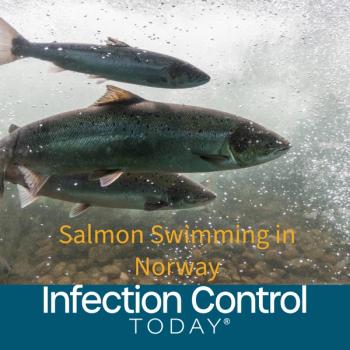
- Infection Control Today, December 2020 (Vol. 24 No. 10)
- Volume 24
- Issue 10
Checklists for Infection Preventionists Working in ORs
New infection preventionists can use this checklist to perform IP rounds in the surgical suite, decontamination areas, and sterile processing area.
Preventing surgical site infections has long been the goal of hospitals across the United States. Important components for preventing SSIs are:
- Implementation of the US Centers for Disease Control and Prevention’s (CDC) 2017 updated guidelines for the prevention of SSIs.
- Compliance with recommendations for proper prophylactic antimicrobial use for its efficacy against pathogens causing SSIs for specific procedures.
- Self-monitoring of procedure and processes with the surgical suites.
- Rounding by the hospital’s infection preventionist.
- Following guidelines from credible organizations.
These are the key components to limiting or decreasing SSIs to 0 or as close to 0 as possible. This article will concentrate on surgical rounding by the hospital’s infection preventionist (IP). There are 4 key areas that the IP should focus on: the environment throughout the surgical
suites, the surgical attire of staff, decontamination and the sterilization processes. New IPs can use this checklist to perform IP rounds in the surgical suite, decontamination areas, and sterile processing area. Included with each question is a rationale that can be used as training for the new IP.Developing well-run, infection-free surgery and post-surgical practices is important in today’s market of reimbursement that rewards good performance.
Safety Measures
SSI rates are one of the key safety measures tied to value-based purchasing programs as well as the Afford- able Care Act Hospital Readmissions Reduction Program, in which the Centers for Medicare and Medicaid Services (CMS) will penalize hospitals for readmissions in some situations. To be successful, there must be a multidisciplinary effort that includes the surgical team, decontamination and sterile processing, infection prevention techniques, and training as to the post-op care of the patient and surgical site, as well as environmental services and plant operations.
The provided checklist is only a small sample of items that beginner IPs can utilize when making rounds in the OR, decontamination, and sterilization areas.
It is important for IPs to continue their education around this topic so they can continuously improve on their skills in identifying issues within the OR, decontamination, and sterile processing areas to ensure safety for patients. To learn more, a good resource is the Central Service Technical Manual1 published by the Inter- national Association of Healthcare Central Service Materiel Management (IAHCSMM) (page numbers in the tables refer to the manual).
References:
- Patel SN, Murray-Leonard J, Wilson AP. Laundering of hospital staff uniforms at home. J Hosp Infect. 2006;62(1):89–93.
- Munk S, Johansen C, Stahnke LH, Adler-Nissen J. Microbial survival and odor in laundry. J Surfact Deterg. 2001:4(4)385–394.
- Patel SN, Murray-Leonard J, Wilson AP. Laundering of hospital staff uniforms at home. J Hosp Infect. 2006;62(1):89–93.
- Munk S, Johansen C, Stahnke LH, Adler-Nissen J. Microbial survival and odor in laundry. J Surfact Deterg. 2001:4(4)385–394.
- Nordstrom JM, Reynolds KA, Gerba CP. Comparison of bacteria on new, disposable, laundered, and unlaundered hospital scrubs. Am J Infect Control. 2012;40(6):539–543.
Articles in this issue
about 5 years ago
Bug of the Month: I’m Mostly a Non-Entity Until I Turn Deadlyabout 5 years ago
The Year Infection Preventionists Showed the World Their Worthabout 5 years ago
COVID Unleashes the ‘Lurking Scourge’ Candida Aurisabout 5 years ago
Why Water Vapor in Hospitals Mattersabout 5 years ago
Infection Preventionist Leads Flu Vaccination EffortNewsletter
Stay prepared and protected with Infection Control Today's newsletter, delivering essential updates, best practices, and expert insights for infection preventionists.





